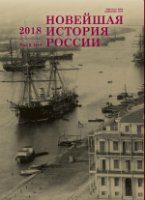Иностранное присутствие в Палестине в дневниках и заметках русских путешественников конца XIX — начала ХХ в.
Foreign Presence in Palestine in Diaries and Notes of Russian Travelers of the late XIX — early XX Centuries
Author(s): M. S. ShapovalovSubject(s): Politics / Political Sciences, Christian Theology and Religion, Customs / Folklore, Cultural Anthropology / Ethnology, 19th Century, Pre-WW I & WW I (1900 -1919), Other Christian Denominations, Philology
Published by: Издательство Исторического факультета СПбГУ
Keywords: Palestine; pilgrims; protestants; Catholics; Holy Land; proselytism; German colonists;
Summary/Abstract: The paper is based on the notes of Russian travelers to Palestine in the late nineteenth and early twentieth centuries and explores the history of foreign presence in the Holy Land at this time, when the flow of pilgrims from Russia to Palestine greatly increased. Biblical Palestine began to attract representatives of the clergy, monks, and worshipers as well as representatives of the nobility, intellectuals, writers, artists, journalists, teachers, and august persons. This long journey — through the outskirts of the empire, the Turkish straits, and finally Palestine itself — presupposed, first of all, a spiritual and intellectual quest. Therefore, pilgrims often kept diaries and hiking notes, and sent detailed letters to relatives, thus leaving a layer of sources of personal origin. The most famous of these are notes by E. I. Tarasov, I. N. Bartsikhovsky, E. L. Markov, G. A. Gorbunov, V. Vereshchagin, N. P. Kondakov, and others. Once in the Holy Land, travelers reflected on the surrounding reality, nature, and everyday customs of local residents and foreign tourists. A special place in the Palestinian narrative was occupied by the theme of foreign presence, which revealed itself in the description of the confessional, economic, political, cultural, and philanthropic activities of European states in the Holy Land. In this connection, the author sets out to reconstruct the forms of foreign presence and to answer the following questions: What alignment of forces of the European powers did Russian travelers see in Palestine? Who, in their opinion, posed the greatest threat to Russian interests in the Holy Land?
Journal: Новейшая история России
- Issue Year: 8/2018
- Issue No: 4
- Page Range: 951-965
- Page Count: 15
- Language: Russian

